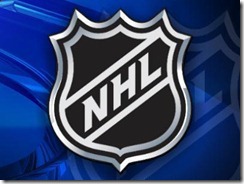The Growth of the Salary Cap
The NHL Collective-Bargaining Agreement that was ratified after the 2004-2005 lockout ended an entire NHL season included a salary cap with a maximum cap of $39 million on a team, and $7.8 million on a single player. Today, just one season before the current CBA expires the NHLs max cap has grown over $25 million to $64.3 million. In fact the 2011-2012 lower limit of $48.3 million is $9.3 million more than the inaugural years maximum cap.
As league revenues continue to rise, the salary cap has continued to rise. As a consequence player salaries have risen and as an effect of that general managers have had to develop cap tactics in order to fit these players into their budget.
Most notably was last off-seasons New Jersey Devils attempt to sign Ilya Kovalchuk to a 17-year $102 million contract that would’ve taken Kovalchuk through age 44. At first glance there’s nothing wrong with the deal, but its structure caused a major problem. Kovalchuk would have been earning near $11.5 million per year for five years of the contract while the the 2021-2022 season would have only paid him $750K followed by five years of $550K. The NHL determined that this was a clear attempt to circumvent the integrity of the salary cap and designed and implemented “The Kovalchuk Rule” in order to eliminate these types of deals from the NHL. Two amendments were added to the CBA stating:
1. While players and clubs can continue to negotiate long-term contracts (five years or longer) that include contract years in a player’s 40s, for purposes of salary-cap calculation the contract will effectively be cut off in the year of the contract in which the player turns 41.
2. In any long-term contract that averages more than $5.75 million for the three highest-compensation seasons, the cap charge will be a minimum of $1 million for every season in which the player is 36-39 years of age. That $1 million value will then be used to determine the salary cap hit for the entire contract. If the contract takes the player into his 40s, the previous rule goes into effect.
In the New York Post on Sunday in his weekly “Slap Shots” column, Larry Brooks wrote that Bettman and the suits on 6th avenue had NHL GMs and owners playing right into their hands. Everyone will see up close and personal the farce that GMs are making of the current CBA in terms of “cap-circumvention” and changes will have to be made. Bettman hopes that no longer will big market teams and owners with deep pockets be able to lure high priced free agents to their team by being able to throw $20 million in one calendar year only to be offset on their cap hits with a few years at $1 million and his small market teams will be able to compete and thrive once again. This is great news for teams like Phoenix and Atlant-err-never mind.
Fast-forward to the 2011 offseason. The offseason before the CBA expires. The offseason that should be called “The rollback fear season” since the current CBA will expire and who knows what the next CBA will have in it to avoid these types of situations.
Massive contracts have been handed out to unrestricted free agents like Brad Richards and Ilya Bryzgalov. Although Bryzgalov never hit the open market being signed before July 1st he still made it a point in his contract negotiations to get as much money as possible now. With that practice, the Flyers also needed to ensure themselves enough wiggle room with the cap to avoid blowing up their team and stay competitive – even though they did that anyway. The 9 year $51 million deal will pay Bryzgalov $15 million this season (a $10 million salary with a $5 million signing bonus). Even with that $15 million on the books, the Flyers annual cap hit will only be $5.667 million thanks to 2 years at the end of the deal where Bryzgalov will earn $2.25 million and $1.25 million. This deal is in no way illegal in consideration with the current CBA. Bryzgalov will be 39 when the deal expires.
Christian Ehrhoff signed a ten-year deal with the Sabres this off-season worth $40 million. The deal will pay Ehrhoff a guaranteed $18 million this calendar year including $10 million in salary for the 2011-2012 season with an $8 million signing bonus. Ehrhoff’s deal is off-set on the cap with his final three years paying him a total of $3 million. Ehrhoff will be 39 when the deal expires.
Brad Richards signed a nine-year deal worth $60 million with the New York Rangers this off-season. Richards will be guaranteed $20 million in this calendar year with a season at $12 million salary and a signing bonus of $8 million. Richards’ deal will be off-set after year six when in years seven, eight and nine Richards will only be due $3 million total after earning $85 million of salaries and singing bonuses the six years prior. Richards will be near 40 when the deal expires.
Only four players in the NHL will earn salaries of $10 million or more this season – Brad Richards, Ilya Bryzgalov, Vincent Lecavalier, and Christian Ehrhoff. Coincidentally none of these four players appear in the top four cap hits around the NHL.
The fear of salary rollbacks like those that occurred before the 05-06 season are on the forefront this offseason and are being handled very well by player agents as noted by this off-seasons surge in front-loaded contracts. This issue will also be one of the main arguments in the new CBA as the NHL tries to avoid its second lockout in seven years.




Leave a Reply